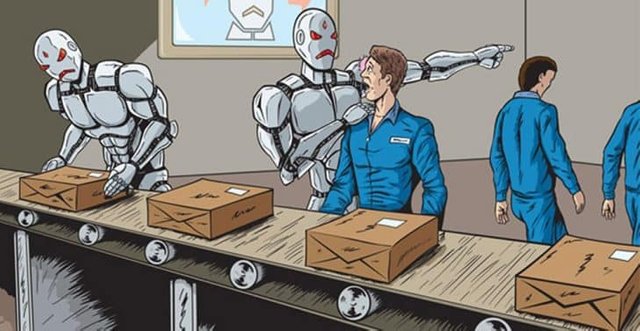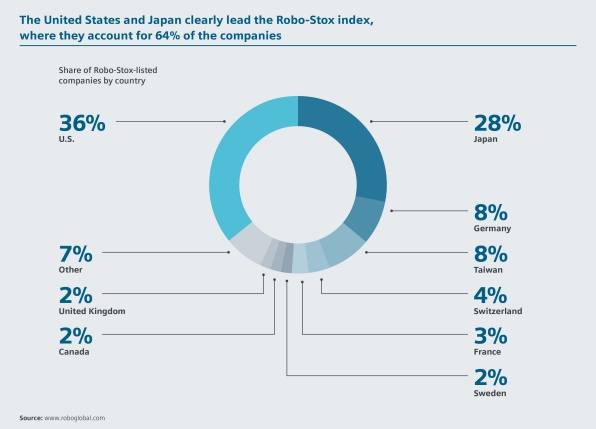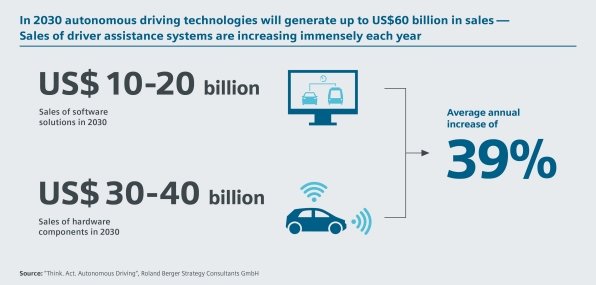Robots are Imposing New Business Models

The introduction of robotic systems changes not only industry but also consumer behavior.
In 2005, $ 11 billion of US $ was spent on robotic systems. By 2025 this amount is expected to grow to $67 billion. But beyond this incredible story of growth, there is a changing game trend where the robot not only performs repetitive tasks but also goes to partial autonomy - a trend that will transform not only production and logistics, but also business models and consumer behavior.
Approximately four decades ago, industrial robots began to transform production. With their mechanical, programmable hands, they perform tasks such as welding, painting, lifting and moving objects, all based on repeatability of processes.
Today's robots perform these tasks and many more. Assemble cars, dismantle antipersonnel mines, assist in surgical procedures, cleanse. The Boston Consulting Group predicts global sales by 2025 to over $ 67 billion, compared with just $ 11 billion in 2005.
But the automation itself is also changing, and the experts agree that the next big step will be the gradual introduction of autonomous systems. This means that in the not so distant future robots will no longer require annoying programming. Using machine vision, motion sensors, image recognition and voice recognition, and advanced new software, they will be able to cope with ever more intelligent tasks, including communicating with the environment and constantly learning from it, and especially from people .

Cost reduction
This increase in productivity will accelerate growth and help drive further price reductions. While an industrial robot cost an average of $ 150,000 in 2010, the price has fallen to just $ 25,000 in 2015 - a 83% reduction in just five years. And the trend continues. Although costs may not shrink drastically in the coming years, they will probably decrease. Experts predict that high-tech components, especially 3D cameras, will soon be much cheaper, which means they will be installed in more and more robots. This will make it possible to perform many new tasks that previously required expensive devices. Additionally, the development of algorithms currently under way by Siemens experts can reduce the cost of creating new robotic production cells by 50%.
Increasingly flexible and precise
At the same time, computers are getting faster and their programming more and more intelligent. The experts from The Boston Consulting Group believe that as a result, the tasks performed by the robots will increase from 10 per cent to 25 per cent by 2025. One simple illustrative example is meat processing. The slaughter of animals is an extremely difficult task for traditional robots because the meat has to be cut in many different forms. This problem can be solved by a system that "scans" pieces of meat into 3D, transmits this data to the robots and optimally adjusts their blades. This is an example of how robots can become more flexible and precise - a small step on the long road to autonomous systems. This in turn will further expand the scope of their applications in the textile, agricultural, transport, healthcare and other sectors.
Changing the work environment
Analysts expect the number of unskilled jobs, which consist of largely repetitive tasks, to diminish globally. Experts at The Boston Consulting Group therefore expect a change in the paradigm. Countries that already have the knowledge and infrastructure that enable autonomous technology systems will become more attractive to manufacturers than those with low pay. Additional factors that are expected to accelerate this trend are the decreasing prices of automation solutions and rising labor costs. Our aging society and declining workforce will further accelerate this trend.

Market for $ 40 billion on the horizon
Introducing autonomous systems could lead to enormous changes in corporate models, not only for the industry. An example of this is the market for autonomous vehicles. For example, Uber, Google and Apple are in the process of developing self-managed cars. Traditional carmakers will face new competition. After all, as mobility trends continue to evolve, knowledge in the IT sphere will be as demanded as those in production and logistics. Software development, however, is an unknown territory for carmakers.
In addition, autonomous driving will change consumer behavior and require new business models. According to a recent study by consulting firm Roland Berger, it will result in an additional sales volume of approximately $ 40 billion in hardware components by 2030. New software solutions for driver assistance systems will grow to nearly 20 billion globally by 2030.
Vehicle automation is an impressive demonstration of how business models can change in parallel with our daily lives. In the future, we will be able to call our car or request it from a service provider when needed and get our car parked in front of our front door. We will go in, we will choose a destination and the car will take us safely there - in perfect comfort and without having to wait for a jam. An on-board computer connected to other vehicles and the traffic management infrastructure will handle everything.
The financial world responds quickly to the robotic trend. Robo-Stox (ROBO Global Robotics and Automation GO UCITS ETF), an index of robotics and automation companies, has been in place since mid-2014. It includes the shares of 79 companies that deal in part or mainly with robotics. Among them are Rockwell Automation, the world's largest maker of automated and IT industrial manufacturing solutions, iRobot, known for its robotic floor cleaning products, and Intuitive Surgical, a maker of medical robots. Robo-Stox includes 5 German companies: Jenoptik, Krones, Kuka, Leoni and Siemens.

The only issue here is that all of this requires programming. Machine vision (CV) is also a big pain in the ass, but it can do a lot of good stuff if you have the right team behind the code.
I think I get what you're saying though: less on the spot coding will need to be done. That's correct, IMO.